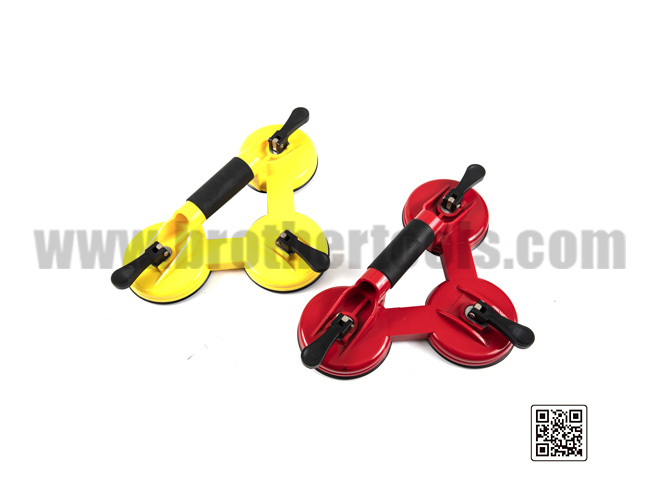ZHEJIANG HANJIA TECHNOLOGY CO., LTD.
XINCHANG BROTHER TOOLS CO., LTD.
Due to the special structure of Glass Suction Cups, a temporary confined space is formed after contact with an object. We draw away or thin the air in the confined space through pneumatic pipelines or certain devices. In this way, the air pressure inside the confined space is lower than the atmospheric pressure outside. As a result, the pressure difference between the inside and outside is generated. The atmospheric pressure outside squeezes the object and the vacuum cup firmly together. In this way, we see Glass Suction Cups attracting objects. After reaching the destination, the confined space is connected to the outside atmospheric pressure, and the Glass Suction Cups are separated from the object. Based on the above principles, the vacuum suction cup is an important accessory in the vacuum system! When the vacuum system adsorbs and grasps the workpiece, the vacuum suction cup directly contacts the workpiece and plays the role of sealing and connection. There are many kinds of materials for vacuum suction cups, such as nitrile rubber, silicone rubber, fluorine rubber, natural rubber and so on. Different materials are suitable for different environments. For example, the vacuum suction cup of silicone rubber is suitable for high temperature occasions, and the oil resistance of nitrile rubber is better. Vacuum suction cups also have many specifications and shapes, and the diameter of vacuum suction cups ranges from -2MM to 300-400mm. According to the shape, vacuum suction cups include round vacuum suction cups, oval vacuum suction cups, square vacuum suction cups; single-layer vacuum suction cups, double-layer vacuum suction cups, multi-layer vacuum suction cups, etc.


NO: BR20066 BR20067 BR20068



NO: BR24027

NO: BR20045

NO: 6003-D


NO: BR19181